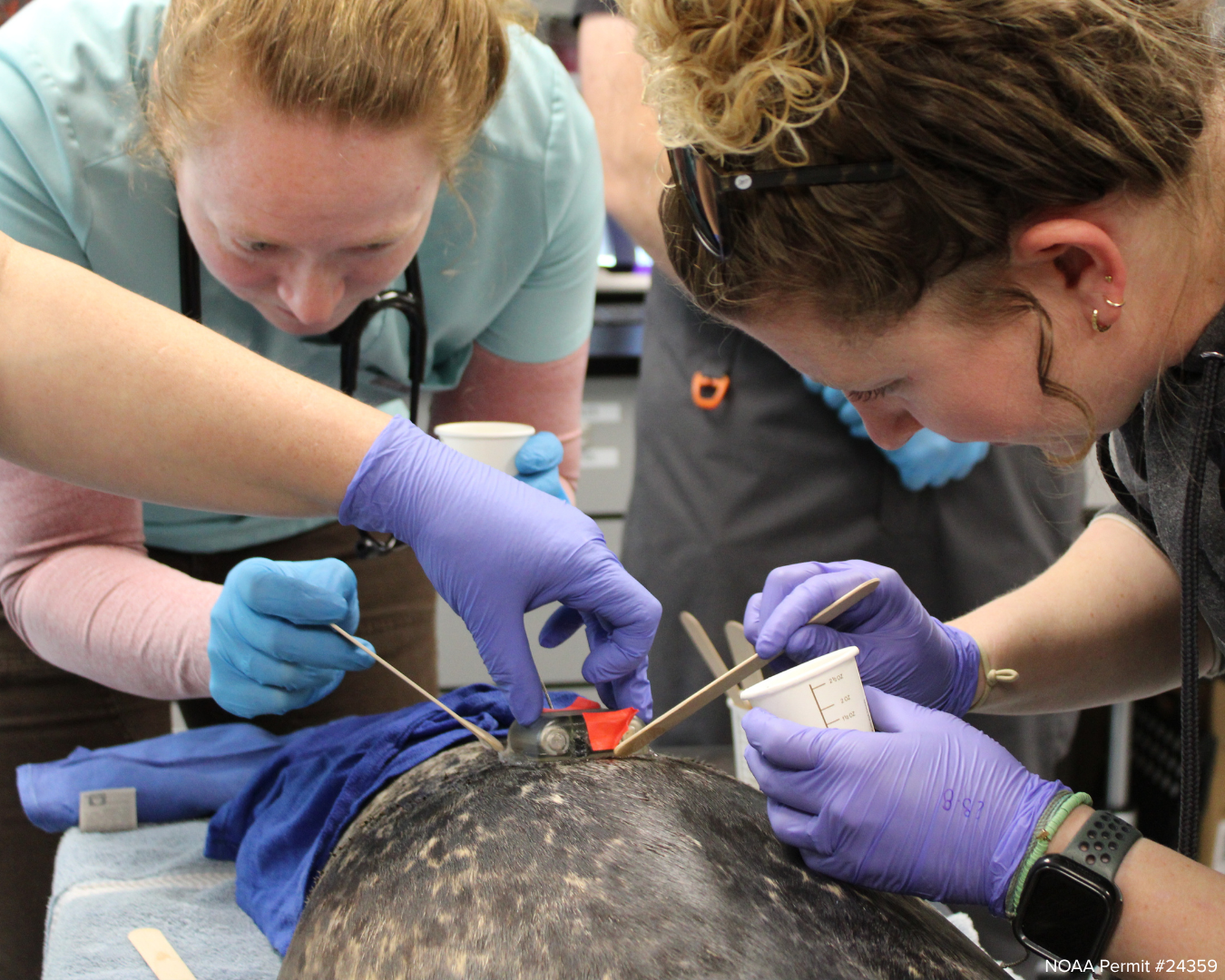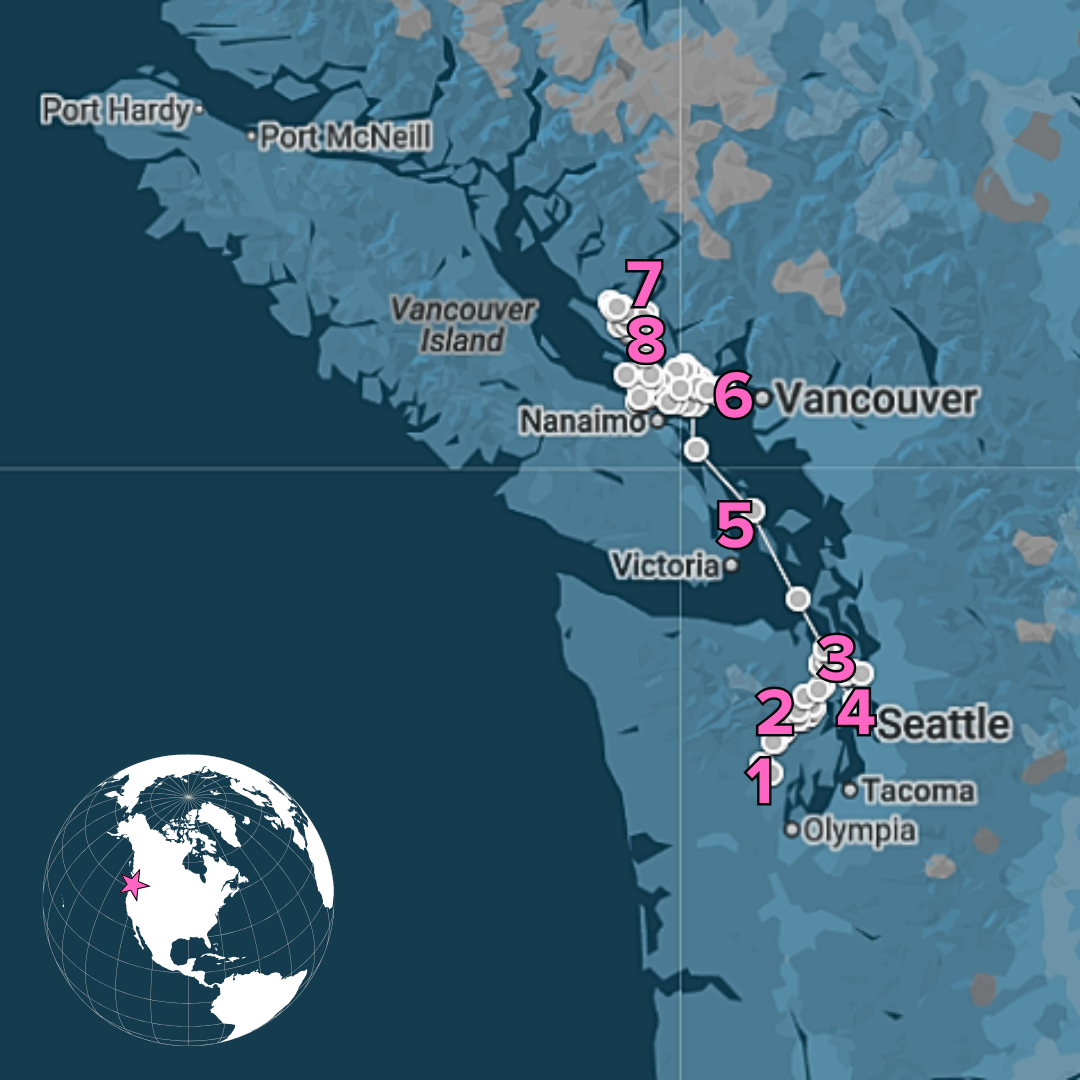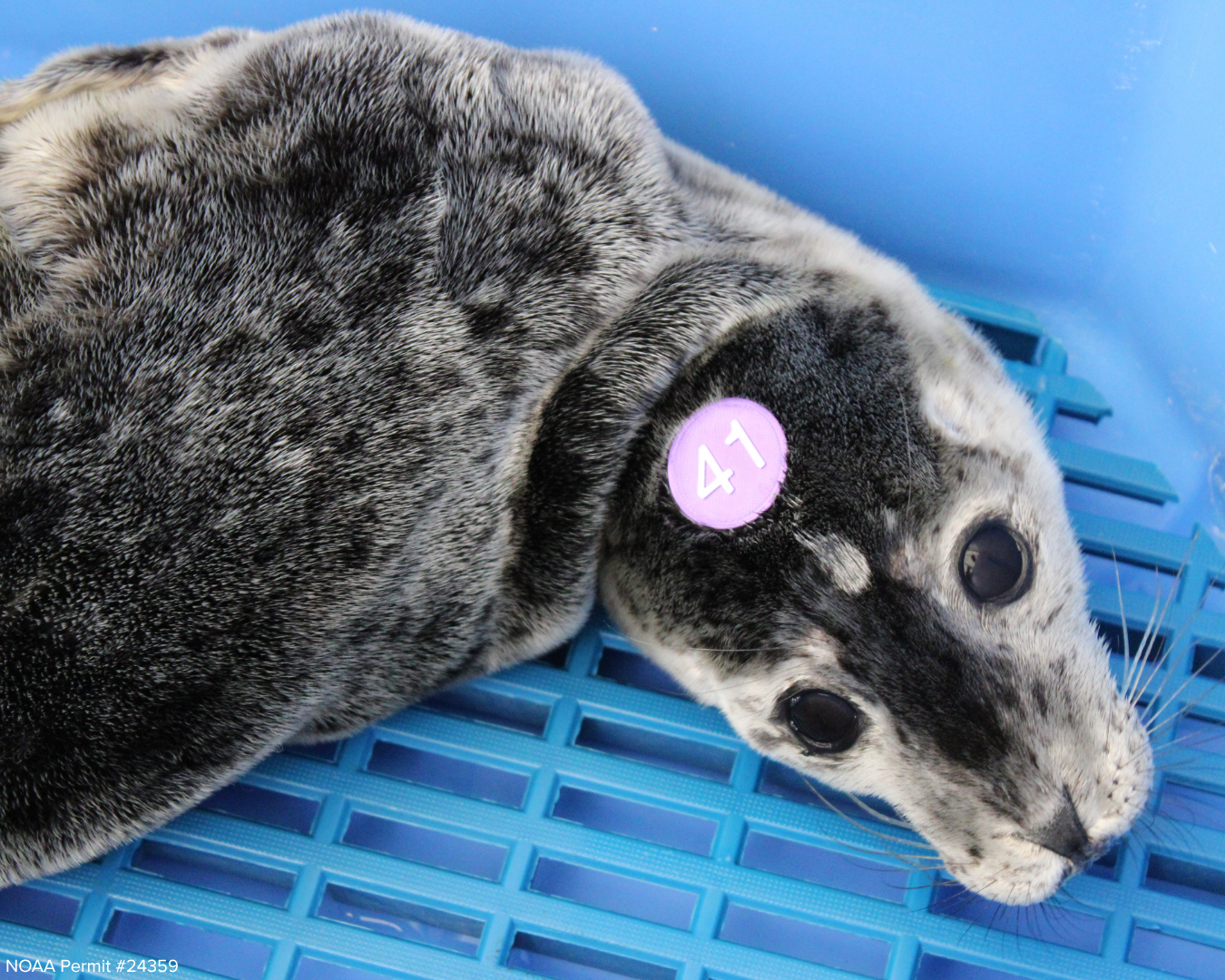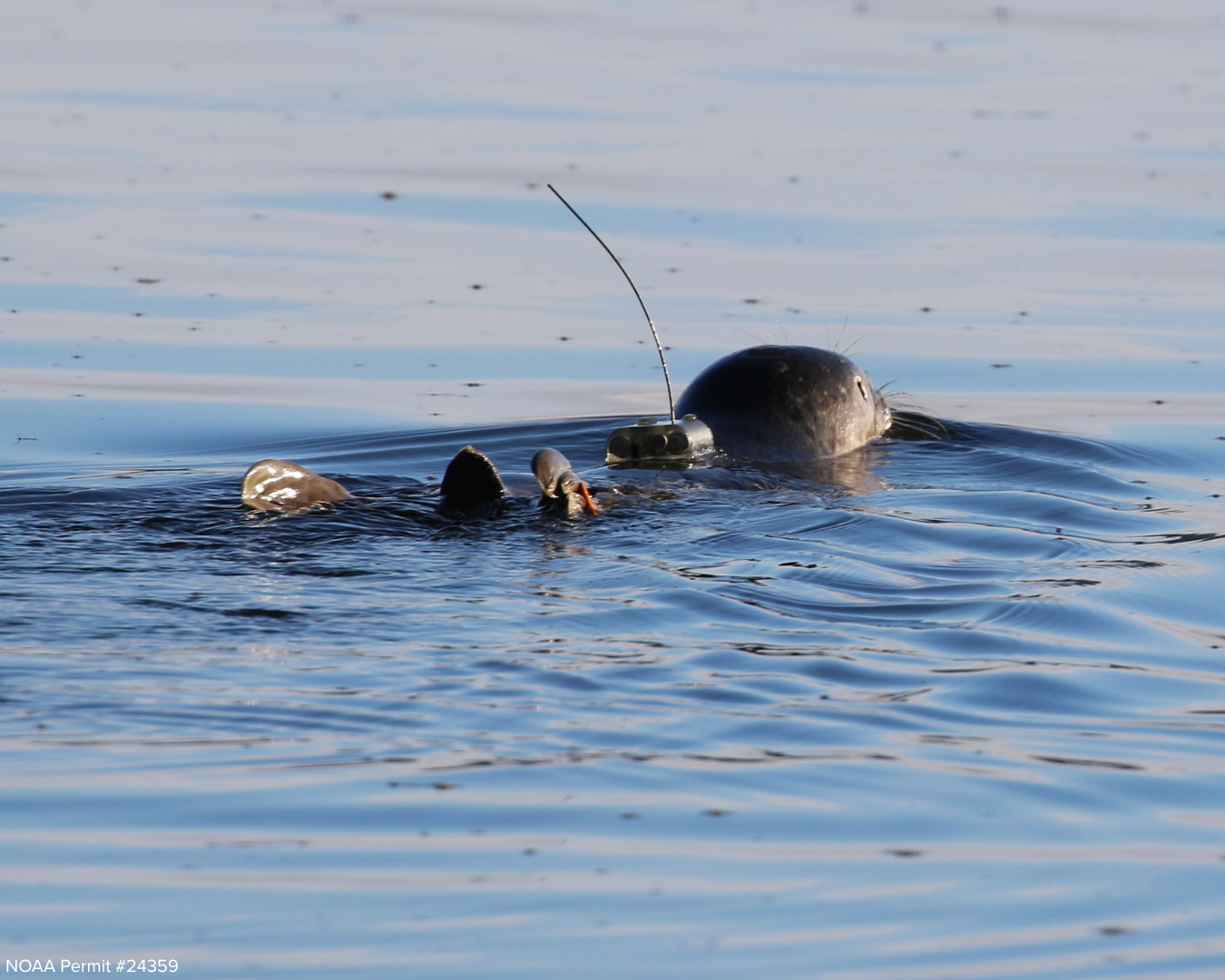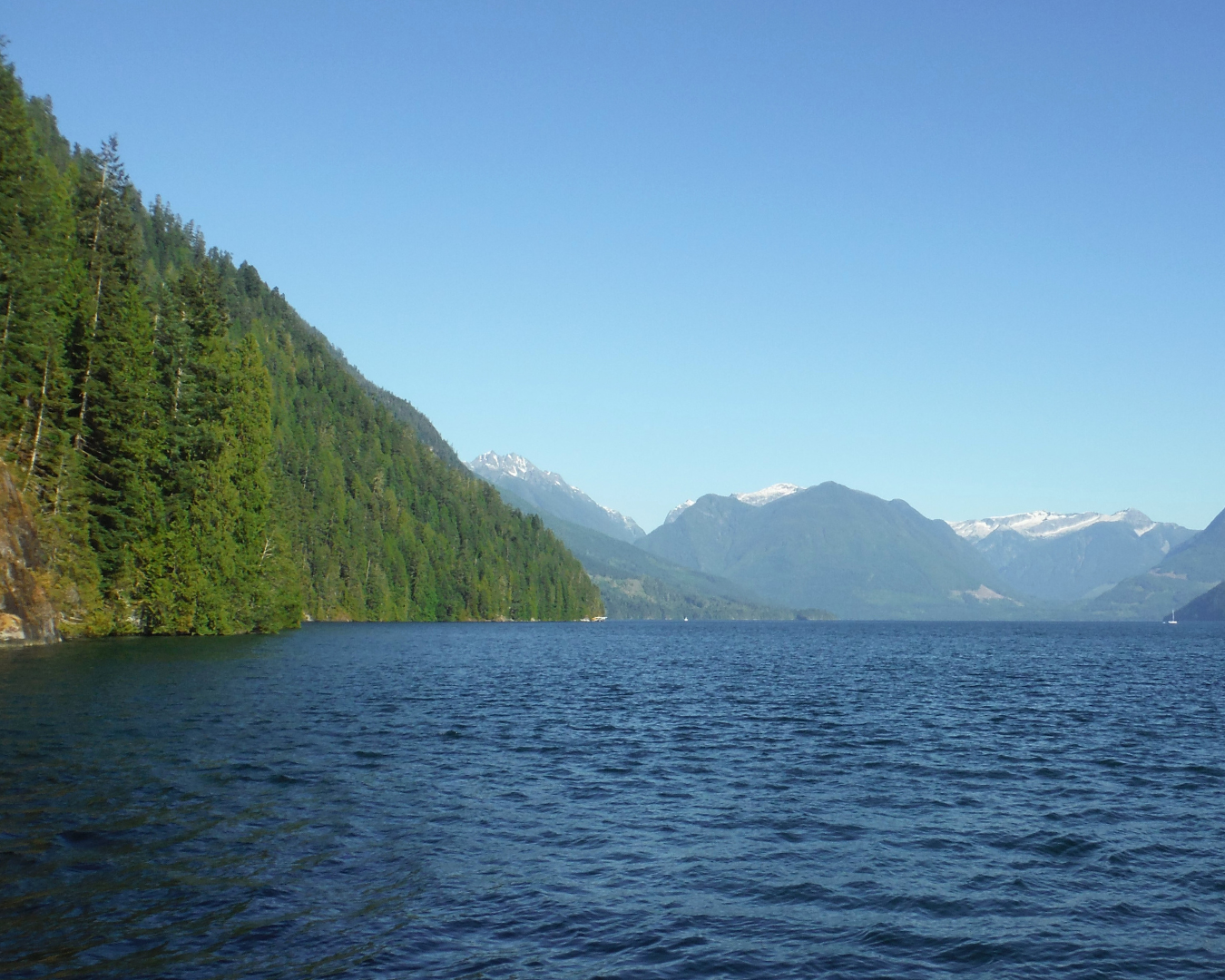8 Places Naga Visited in the Salish Sea
The Salish Sea from the International Space Station (NASA), marked with Naga’s release and last transmission locations.
After six months of sending location data to satellites, Naga the harbor seal has finally stopped phoning home.
Equipped with a tracking tag on her back upon release, Naga sent us her location for 180 days as satellites flew overhead while her back was exposed - either as she was floating in the water or resting on shore.
While we don’t know the reason the tag stopped transmitting, there are several possibilities, including the tag’s battery dying (six months is the expected lifespan of the tag), or Naga’s molt when she shed her fur on which the tag was attached. It could have also been a case of predation.
But while our insight into Naga’s journey has ended, there’s no hiding the fact that she was a well-traveled seal, traversing 177 miles as the crow flies from the south end of Hood Canal, WA to Stillwater Bay, BC. Here are a few highlights of her journey.
The animal care team applies Naga’s satellite tag to the fur on her back with glue. She is sedated during this procedure.
A map of Naga’s daily locations throughout the Salish Sea (marked with gray dots), with monumental parts of her journey labeled 1-8
Naga was rescued in Union, WA at the south end of Hood Canal on August 8th, 2024. She needed care because of maternal abandonment and malnutrition - she was only 13 pounds when she came to the Rescue Center, half the weight of a healthy harbor seal at birth. During her care, we also discovered she had a condition called megaesophagus.
After 163 days in care, Naga returned to the ocean at Triton Cove Tidelands on January 18th, 2025. She bounced around Hood Canal for the next month.
Naga’s first time exploring the waters outside of Hood Canal was on February 12th and 13th. She then returned to Hood Canal’s protected waters until February 24th.
On February 26th, Naga went sightseeing to Seattle!
On March 1st, Naga began her journey north and crossed the border into Canada through Haro Strait on the west side of San Juan Island.
On March 5th, Naga and Biscuits, a rehabilitated harbor seal from Vancouver Aquarium Marine Mammal Rescue Society were about 10 miles away from each other.
From June 20th to the 22nd, Naga was exploring Jervis Inlet, one of the deepest parts of the Salish Sea. These channels were carved by glaciers thousands of years ago, and have very steep sides. Jervis Inlet is only a little more than a mile wide, but it is 2,200 feet deep.
Naga’s satellite tag last phoned home on the morning of July 17th in Malaspina Strait.
Naga’s six months of location data show us that after her treatment and time at the Rescue Center, she continued to be a successful harbor seal in the wild. Her story will also contribute to a growing body of research on megaesophagus. As we see this condition in patients, we will continue to satellite tag them to learn more about the success of their treatment and long term survival.


